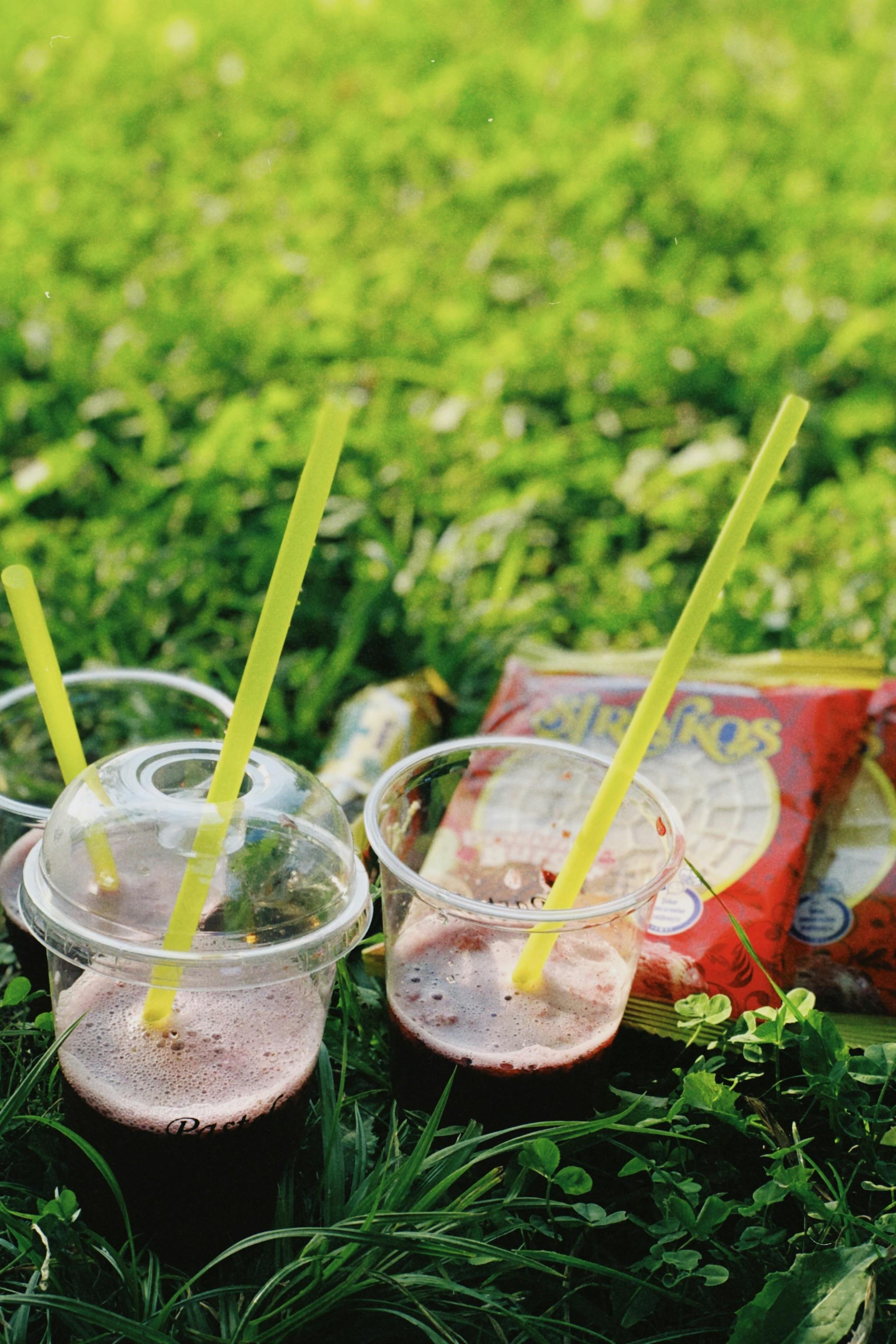Alright, so here’s the deal: we’re about to spill the beans on a little secret – how to keep coffee grounds burning. You know those leftover grounds from your morning brew that you usually just toss in the trash? Well, turns out, they have some tricks up their sleeve. We’ve dug deep into the mysterious world of coffee grounds and uncovered the secrets to keeping them burning for longer than you ever thought possible. Get ready to be amazed as we share the ins and outs of this coffee-fueled fire magic.

Choosing the Right Coffee Grounds
When it comes to keeping coffee grounds burning, selecting the right type of coffee can make a significant difference. Opting for dark roast coffee grounds is a good choice, as they have a richer and more robust flavor profile. The intense roasting process gives these grounds a higher oil content, which helps them burn more easily. Dark roast grounds also tend to have a longer shelf life, making them a reliable option for extended use.
Another crucial factor to consider is the consistency of the coffee grounds. Ensuring that the grounds are fine and consistent in size is essential for achieving a consistent burn. Finely ground coffee enables a faster and more even extraction of flavors, resulting in a stronger and more aromatic cup of coffee. Consistency in size ensures that the grounds burn uniformly, preventing any portions from becoming over or under roasted.
When selecting coffee grounds for burning, it is advisable to avoid flavored or oily options. Flavored coffee grounds often contain additional ingredients that may interfere with the burning process, creating unwanted aromas or flavors. Oily coffee grounds can also hinder combustion, as the excess oils tend to smother the burning process. Therefore, it is best to stick to plain, unflavored coffee grounds for optimal burning results.
Storing Coffee Grounds Properly
To keep your coffee grounds in prime burning condition, proper storage is crucial. After purchasing your preferred coffee grounds, it is essential to transfer them to an airtight container. The airtight seal will prevent exposure to air, which can lead to oxidation and loss of flavor. Additionally, it helps to preserve the oils within the coffee grounds, which aids in the burning process.
When selecting a storage location for your coffee grounds, opt for a cool and dry place. Heat and moisture can alter the composition of the coffee grounds, leading to a subpar burning experience. Avoid storing the container near a heat source, such as the oven or microwave, and keep it away from areas prone to high humidity or moisture, such as the dishwasher or sink.
Moreover, it is vital to avoid exposure to light, as it can contribute to the degradation of the coffee grounds. Light exposure can enhance the oxidation process, diminishing the flavors and aromas of the coffee. If possible, store the coffee grounds in an opaque container or place it in a dark corner of your pantry or cupboard to protect them from light.

Preventing Coffee Grounds from Absorbing Moisture
Moisture is one of the biggest enemies of coffee grounds when it comes to burning. It can hinder the ignition process and result in a weak and uneven burn. To prevent moisture from affecting your coffee grounds, there are a few useful techniques you can employ.
One option is to use a moisture absorber in the storage container, such as silica gel packets. These small packets work by absorbing excess moisture, keeping the coffee grounds dry and ready for burning. Simply place a few packets in the container with the coffee grounds, ensuring they do not come into direct contact.
Another simple method to tackle moisture absorption is adding a spoonful of uncooked rice to the container. Rice acts as a natural moisture absorber and can help maintain the dryness of the coffee grounds. Make sure to use a clean, dry spoon when adding rice to the container to avoid introducing any unwanted moisture.
Additionally, it is crucial to store the coffee grounds away from any heat sources, as excessive heat can lead to moisture accumulation. Placing the container in proximity to a heat source can cause condensation, which will negatively impact the quality of the coffee grounds. Ensure that your storage location is cool and dry to prevent any moisture-related issues.
Ensuring Dry Brewing Equipment
To achieve optimal burn results, it is essential to start with dry brewing equipment. Moisture in the brewing components can interfere with the burning process and produce undesirable results. Therefore, it is crucial to clean and thoroughly dry your coffee maker components before each brewing session.
Begin by disassembling your coffee maker and cleaning each component with warm, soapy water. Rinse them thoroughly to remove any soap residue, and then pat them dry with a clean towel or let them air dry completely. This process eliminates any potential water residue that could affect the burning of the coffee grounds.
In addition to the coffee maker components, it is important to ensure that your coffee filters and brewing accessories are also dry. Moist filters can disrupt the burn, affecting the overall performance of your coffee grounds. Before each brewing session, make sure to inspect your filters and accessories for any signs of moisture and replace them if necessary.
Finally, pay attention to any water residue that may accumulate during the brewing process. After each brew, wipe down the brewing equipment and remove any water residue to prevent it from affecting subsequent brewing sessions. This small step can ensure that your coffee grounds burn consistently and produce the desired results.

Using an Appropriate Coffee Brewing Method
Choosing the right brewing method is crucial when it comes to burning coffee grounds effectively. Certain brewing methods are better suited for burning coffee grounds, as they expose the grounds to direct heat, enhancing the burning process. To achieve the desired burn level, it is advisable to prefer methods that involve direct heat exposure.
Methods such as espresso, French press, or pour-over brewing tend to work well for burning coffee grounds. These methods typically involve higher temperatures and longer brewing times, allowing for a more thorough and even burn. The direct heat exposure facilitates the release of flavors and aromas, resulting in a richer and more intense cup of coffee.
On the other hand, cold brewing or methods with minimal heat exposure may not be ideal for burning coffee grounds. These methods focus on a longer extraction process completed at lower temperatures, which may not provide the necessary conditions for a successful burn. While cold brewing does have its merits in terms of flavor and smoothness, it may not yield the desired burn results.
Maintaining Consistent Heat
Consistent heat is crucial for achieving a successful burn when brewing coffee. Inconsistencies in heat can result in uneven extraction and underdeveloped flavors. To maintain a consistent level of heat throughout the brewing process, there are a few key steps to follow.
Before adding the coffee grounds to the brewing equipment, it is important to preheat the equipment. Preheating ensures that the brewing temperature remains stable and allows for a more even extraction. Simply run hot water through the equipment for a few moments before discarding it and adding the coffee grounds.
When brewing, monitor the heat source to ensure that it remains within the optimum range. Each brewing method may require a specific temperature range, so it is crucial to follow the instructions or recommendations for your chosen method. Consistently monitoring the heat source will help maintain a consistent burn and prevent any temperature fluctuations that could impact the flavor and quality of the coffee.
Controlling Airflow during Brewing
Proper airflow is another essential aspect to consider when burning coffee grounds. Adequate ventilation is crucial for combustion and ensuring a successful burn. A lack of airflow can result in incomplete combustion, leading to a weak and tasteless cup of coffee. Therefore, it is important to pay attention to the airflow within your chosen coffee maker.
To ensure proper ventilation, avoid blocking any airflow passages within the coffee maker. Check that the vents and openings are clear of any debris or obstructions that may impede the flow of air. Proper ventilation allows for the adequate supply of oxygen, which is necessary for complete burning and the development of flavors in the coffee grounds.
Furthermore, adjusting the brewing parameters can help regulate the airflow during the brewing process. Experimenting with the grind size, dosage, and water flow rate can help achieve the desired level of airflow and ensure an optimal burn. By fine-tuning these parameters, you can customize the brewing process to suit your preferences and achieve consistent and flavorful results.
Avoiding Excessive Water
Maintaining a precise water-to-coffee ratio is crucial for avoiding excessive water during the brewing process. Too much water can flood the coffee grounds, leading to an under-extracted brew and a weaker burn. To prevent this, it is essential to measure the water carefully and ensure that it is within the recommended range for your chosen brewing method.
Using a kitchen scale or a measuring cup can help you achieve the desired water-to-coffee ratio accurately. Following the recommended ratio specified by your brewing method or experimenting with different ratios based on your preferences can ensure that you have just the right amount of water in your brew.
Additionally, avoid overfilling the coffee maker reservoir to prevent water from overflowing onto the coffee grounds. Filling the reservoir to the recommended level reduces the risk of excessive water and allows for proper extraction. By avoiding excessive water, you can ensure a more concentrated and flavorful burn.
Regular Maintenance of Coffee Maker
Regular maintenance of your coffee maker is essential for optimal performance and consistent burning of coffee grounds. Over time, residue can accumulate within the coffee maker, affecting the taste and burning process. To prevent any issues, it is important to clean your coffee maker periodically.
Cleaning the coffee maker components, such as the carafe, removable parts, and filter basket, is crucial to remove any residue and oils. These residues can build up over time and create a barrier that inhibits proper burning and extraction. Using warm, soapy water and a gentle scrub, clean each component thoroughly, ensuring all traces of residue are removed.
Additionally, descaling the coffee maker on a regular basis is important to prevent clogs or blockages in the brewing system. Over time, mineral deposits from the water can accumulate within the coffee maker, obstructing the flow of water and affecting the brewing process. Following the manufacturer’s instructions, descale your coffee maker periodically to maintain its performance and ensure consistently good burns.
Replacing old or worn-out parts is another crucial aspect of coffee maker maintenance. As the coffee maker ages, certain parts may become less effective, hindering the overall performance of the machine. If you notice any signs of wear or malfunctioning parts, such as a slower brewing time or inconsistent temperature, consider replacing them to maintain optimal burning results.
Experimenting with Coffee Ground Burning
One of the joys of coffee brewing is the opportunity to experiment with different flavors and techniques. To enhance your burn experience, consider exploring different coffee bean origins and blends. Each coffee bean variety offers unique flavors, aromas, and burning characteristics that can add depth and complexity to your cup of coffee.
Try experimenting with single-origin beans from different regions or blends with varying ratios of coffee beans. This allows you to explore different flavor profiles and find the perfect combination for your burning preferences. Take notes of the results and adjust the brewing parameters accordingly to refine your burning technique over time.
In addition to adjusting the coffee beans, don’t be afraid to experiment with the brewing parameters themselves. Fine-tune variables such as grind size, brew time, temperature, and water-to-coffee ratio to achieve your desired burn level. The beauty of coffee brewing is the ability to customize each cup to suit your unique taste preferences.
As you gain more experience with burning coffee grounds, you will develop a deeper understanding of how different factors influence the burn and flavor profile. Over time, this knowledge and experience will help you refine your burning technique and consistently achieve outstanding results in every cup.
In conclusion, the process of keeping coffee grounds burning requires careful attention to various factors. Choosing the right coffee grounds, storing them properly, preventing moisture absorption, ensuring dry brewing equipment, using an appropriate brewing method, maintaining consistent heat, controlling airflow, avoiding excessive water, regularly maintaining the coffee maker, and experimenting with different burning techniques are all essential aspects to consider. By following these guidelines and honing your burning technique, you can enjoy a flavorful and satisfying cup of coffee each time you brew.
